LUFTWAFFE RESOURCE CENTER > FIGHTERS/DESTROYERS > PREVIOUS PAGE
Dornier Do 335
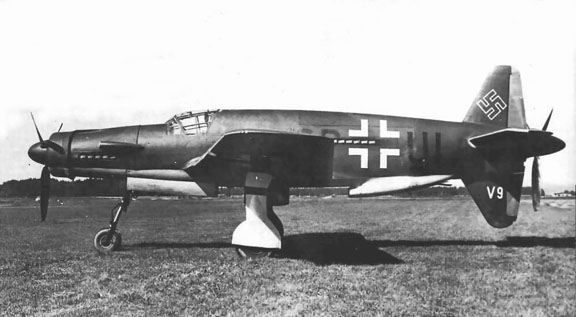
Type: Ground Attack fighter-bomber
Origin: Dornier-Werke GmbH
Models:
– Do 335A-1 (Single-seat fighter)
– Do 335A-6 (Nightfighter)
POWERPLANT:
Model: Daimler-Benz DB 603G
Type: Inverted-V12, liquid cooled engine
Number: Two Horsepower: 1,900 hp
Propeller Unit: VDM
Diameter: 3.50m (front), 3.30m (rear)
FUEL/FLUIDS:
Fuel Capacity: N/A
Type: N/A
Lubricant Capacity:
18.8 Imperial Gallons/90 Liters
Type: N/A
Note: Stored in two seperate tanks behind the pilots seat (port tank for forward engine and starboard tank for rear engine)
Hydraulic Fluid Capacity: 9.9 Imperial Gallons/45 Liters in a protected tank in the port wing.
Type: N/A
DIMENSIONS:
Wing span: 13.8m (45 ft. 4 in.)
Wing Surface Area: N/A
Length: 13.87m (45 ft. 6 in.)
Height: 4m (16 ft. 4 in.)
Stabilizer Span: N/A
Wheel Track: N/A
WEIGHTS:
Empty (A-1): 7,400kg (16,314 lbs.)
Empty (A-6): 7,700kg (16,975 lbs.)
Loaded (A-1): 11,700kg (25,800 lbs.)
Loaded (A-6): 11,700kg (25,800 lbs.)
| |
PERFORMANCE:
Maximum Speed:
413 mph (665 kph) sustained, 477 mph (765kph) with emergency boost
Range (Maximum Fuel):
2050km (1,280 miles)
Range (With Drop Tanks):
3750km (2,330 miles)
Initial Climb: 4,600 ft/min (1400m/min)
Endurance: N/A
Service Ceiling:
– A-1: 37,400 ft (11,410m)
– A-6: 33,400 ft (10,190m)
ARMAMENT:
Do 335A-1
Two 15mm MG 151/15 machine guns above the nose
One 30mm Mk 103 cannon firing through the propellor hub.
Do 335A-6
Two 20mm MG 151/20 machine guns above the nose
One 30mm Mk 103 cannon firing through the propellor hub.
Do 335B-2
Two 20mm MG 151/20 machine guns above the nose
Two 30mm Mk 103 cannon mounted in the wings.
One 30mm Mk 103 cannon firing through the propellor hub.
AVIONICS: (Do 335B-2):
Fug 125a blind landing reciever
Fug 25a IFF
|
The Dornier Do 335 Pfeil ("Arrow") was a World War II heavy fighter built by the Dornier company. The two-seater trainer version was also called Ameisenbär ("anteater"). The Pfeil's performance was much better than other twin-engine designs due to its unique "push-pull" layout and the much lower drag of the in-line alignment of the two engines. The Luftwaffe was desperate to get the design into operational use, but delays in engine deliveries meant only a handful were delivered before the war ended.
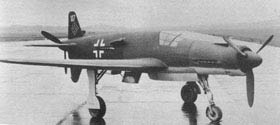
The origins of the Do 335 trace back to World War I when Claudius Dornier designed a number of flying boats featuring remotely-driven propellers and later, due to problems with the drive shafts, tandem engines. Tandem engines were used on most of the multi-engine Dornier flying boats that followed, including the highly successful Do J and the gigantic Do X. The remote propeller drive, intended to eliminate parasitic drag from the engine entirely, was tried in the innovative but unsuccessful Do 14, and elongated drive shafts as later used in the Do 335 saw use in the rear engines of the four-engined, twinned tandem-layout Do 26 flying boat.
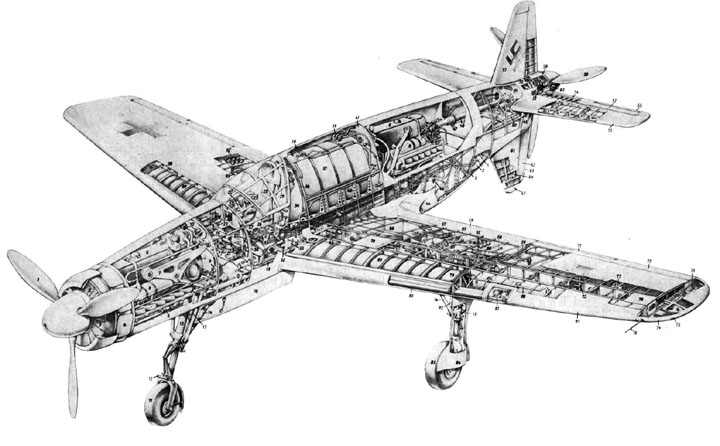
There are many advantages to this design over the more traditional system of placing one engine on each wing, the most important being power from two engines with the frontal area (and thus drag) of a single-engine design, allowing for higher performance. It also keeps the weight of the twin powerplants near, or on, the aircraft centerline, increasing the roll rate compared to a traditional twin. In addition, a single engine failure does not lead to asymmetric thrust, and in normal flight there is no net torque so the plane is easy to handle. The choice of a full "four-surface" set of cruciform tail surfaces in the Do 335's design, allowed the ventral vertical fin–rudder assembly to project downwards from the extreme rear of the fuselage, in order to protect the rear propeller from an accidental ground strike on takeoff.
In 1939, Dornier was busy working on the P.59 high-speed bomber project, which featured the tandem engine layout. In 1940, he commissioned a test aircraft to validate his concept for turning the rear pusher propeller with an engine located far away from it and using a long driveshaft. This aircraft, the Göppingen Gö 9 showed no unforeseen difficulties with this arrangement, but work on the P.59 was stopped in early 1940 when Hermann Göring ordered the cancellation of all projects which would not be completed within a year or so.
In May 1942, Dornier submitted an updated version with a 1,000 kg (2,200 lb) bombload as the P.231, in response to a requirement for a single seat high-speed bomber/intruder. P.231 was selected as the winner after beating rival designs from Arado, Junkers, and Blohm & Voss development contract was awarded as the Do 335. In autumn 1942, Dornier was told that the Do 335 was no longer required, and instead a multi-role fighter based on the same general layout would be accepted. This delayed the prototype delivery as it was modified for the new role.
Fitted with DB 603A engines delivering 1,750 PS (1,287 kW, 1,726 hp) at takeoff, the Do 335 V1 first prototype, bearing the Stammkennzeichen (factory radio code) of CP+UA, flew on 26 October 1943 under the control of Flugkapitän Hans Dieterle, a regular Heinkel test pilot and later primary Dornier test pilot. The pilots were surprised at the speed, acceleration, turning circle, and general handling of the type; it was a twin that flew like a single. However, several problems during the initial flight of the Do 335 would continue to plague the aircraft through most of its short history. Issues were found with the weak landing gear and with the gear doors, resulting in them being removed for the remainder of V1 flights. V1 made 27 flights, flown by three different pilots. During these test flights V2 (W.Nr 230002), Stammkennzeichen CP+UB was completed and made its first flight on 31 December 1943, again under the control of Dieterle. New to the V2 were upgraded DB603 A-2 engines, and se
veral refinements learned from the test flights of V1 as well as further windtunnel testing. On 20 January 1944, V3 (W.Nr. 230004),Stammkennzeichen CP+UC was completed and flown for its first time by Werner Altrogge. V3 was powered by the new DB603 G-0 engines which could produce 1,900 PS (1,400 kW) at take-off and featured a slightly redesigned canopy which included rear-view mirrors in blisters, one in each of two matching side panels of the main canopy. Following the flights of the V3, in mid January 1944, RLM ordered five more prototypes (V21–V25), to be built as night fighters. By this time more than 60 hours of flight time had been put on the Do 335 and reports showed it to be a good handling, but more importantly, very fast aircraft, described by Generalfeldmarschall Erhard Milch himself as "...holding its own in speed and altitude with the P-38 and it does not suffer from engine reliability issues". Thus the Do 335 was scheduled to begin mass construction, with the initial ord
er of 120 preproduction aircraft to be manufactured by DWF (Dornier-Werke Friedrichshafen) to be completed no later than March 1946. This number included a number of bombers, destroyers (heavy fighters), and several yet to be developed variants. At the same time, DWM (Dornier-Werke München) was scheduled to build over 2000 Do 335s in various models, due for delivery in March 1946 as well.
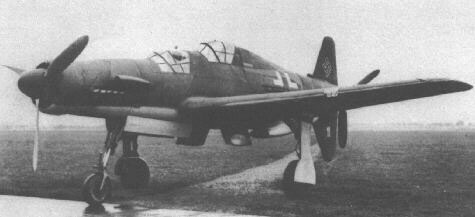
On 23 May 1944, Hitler, as part of the Jägernotprogramm directive, ordered maximum priority to be given to Do 335 production. The main production line was intended to be at Manzel, but a bombing raid in March destroyed the tooling and forced Dornier to set up a new line at Oberpfaffenhofen. The decision was made, along with the rapid shut-down of many other military aircraft development programs, to cancel the Heinkel He 219 night fighter, and use its production facilities for the Do 335 as well. However, Ernst Heinkel managed to delay, and eventually ignore, its implementation.
At least 16 prototype Do 335s were known to have flown (V1–V12, W.Nr 230001-230012 and Müster-series prototypes M13–M17, W.Nr 230013-230017) on a number of DB603 engines including the DB603A, A-2, G-0, E and E-1. The first preproduction Do 335 (A-0s) starting with W.Nr 240101, Stammkennzeichen VG+PG, were delivered in July 1944. Approximately 22 preproduction aircraft were thought to have been completed and flown before the end of the war, including approximately 11 A-0s converted to A-11s for training purposes.
The first 10 Do 335 A-0s were delivered for testing in May. By late 1944, the Do 335 A-1 was on the production line. This was similar to the A-0 but with the uprated DB 603 E-1 engines and two underwing hardpoints for additional bombs, drop tanks or guns. It was capable of a maximum speed of 763 kph (474 mph) at 6,500 m (21,300 ft) with MW 50 boost, or 686 kph (426 mph) without boost, and able to climb to 8,000 m (26,250 ft) in under 15 minutes. Even with one engine out, it could reach about 563 kph (350 mph).
Delivery commenced in January 1945. When the United States Army overran the Oberpfaffenhofen factory in late April 1945, only 11 Do 335 A-1 single-seat fighter-bombers and two Do 335 A-12 trainers had been completed.
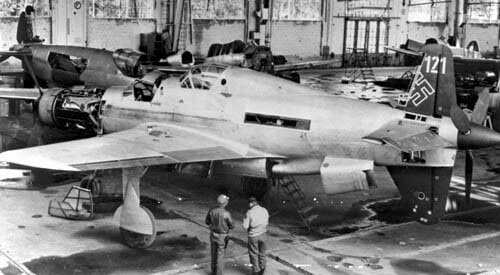
French ace Pierre Clostermann claimed the first Allied combat encounter with a Pfeil in April 1945. In his book The Big Show (pages 273-274) he describes leading a flight of four Hawker Tempests from No. 3 Squadron RAF over northern Germany, when he intercepted a lone Do 335 flying at maximum speed at treetop level. Detecting the British aircraft, the German pilot reversed course to evade. Despite the Tempest's considerable low altitude speed, the RAF fighters were not able to catch up or even get into firing position.

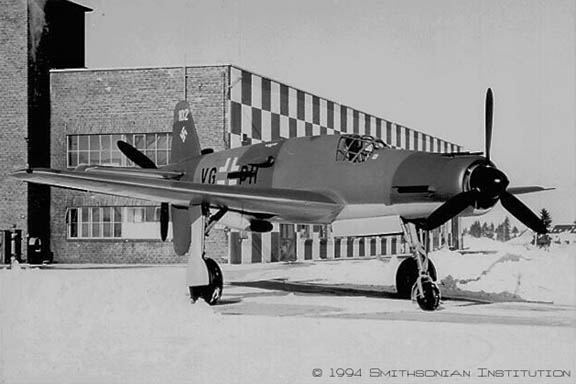
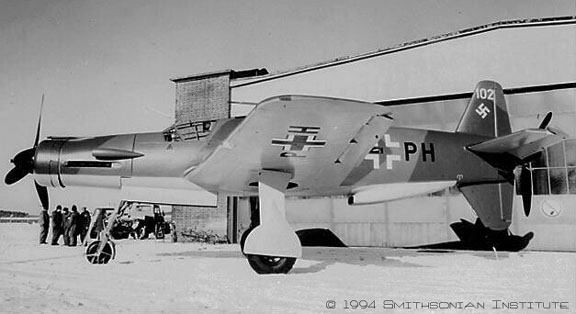
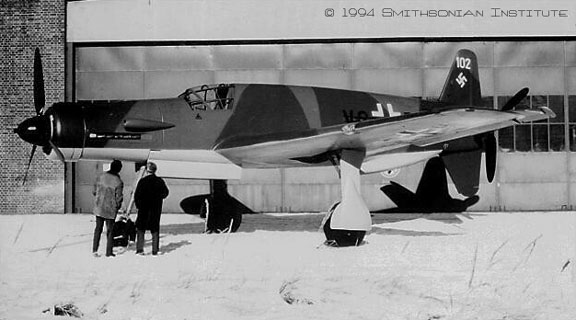
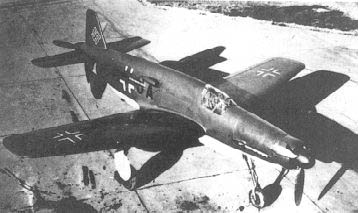
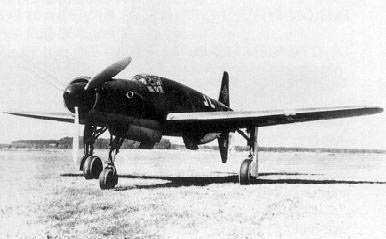
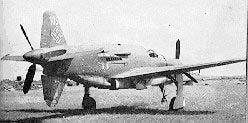

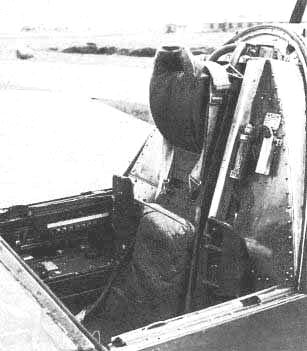

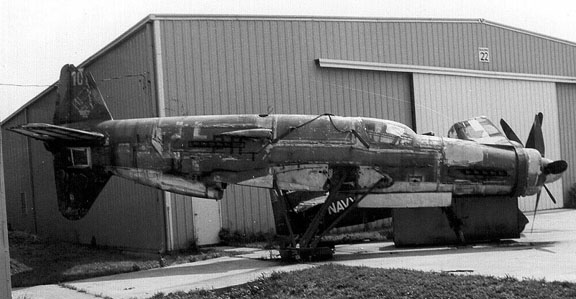

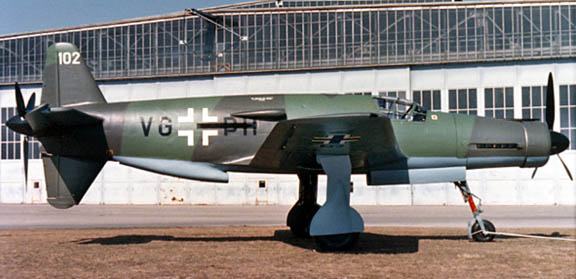
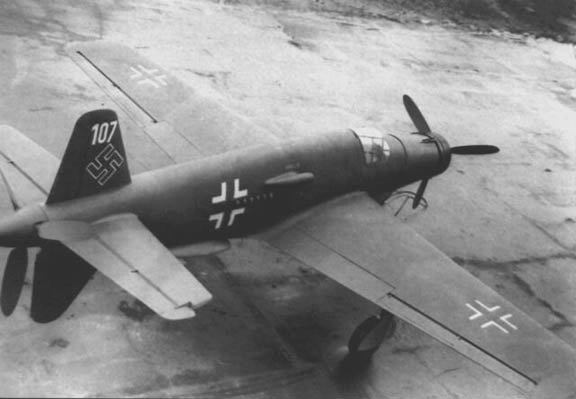
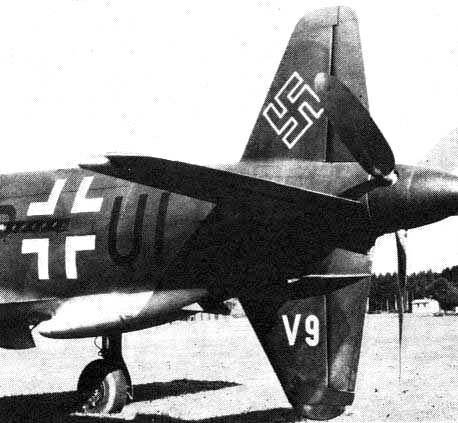
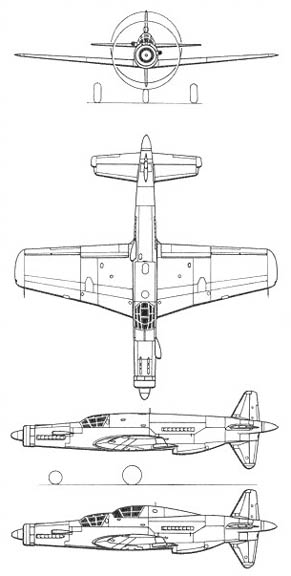
Sources:
Gunston, Bill & Wood, Tony - Hitler's Luftwaffe , 1977, Salamander
Books Ltd., London
, 1977, Salamander
Books Ltd., London
Wikipedia - Dornier Do 335
LUFTWAFFE RESOURCE CENTER > FIGHTERS/DESTROYERS > PREVIOUS PAGE





















